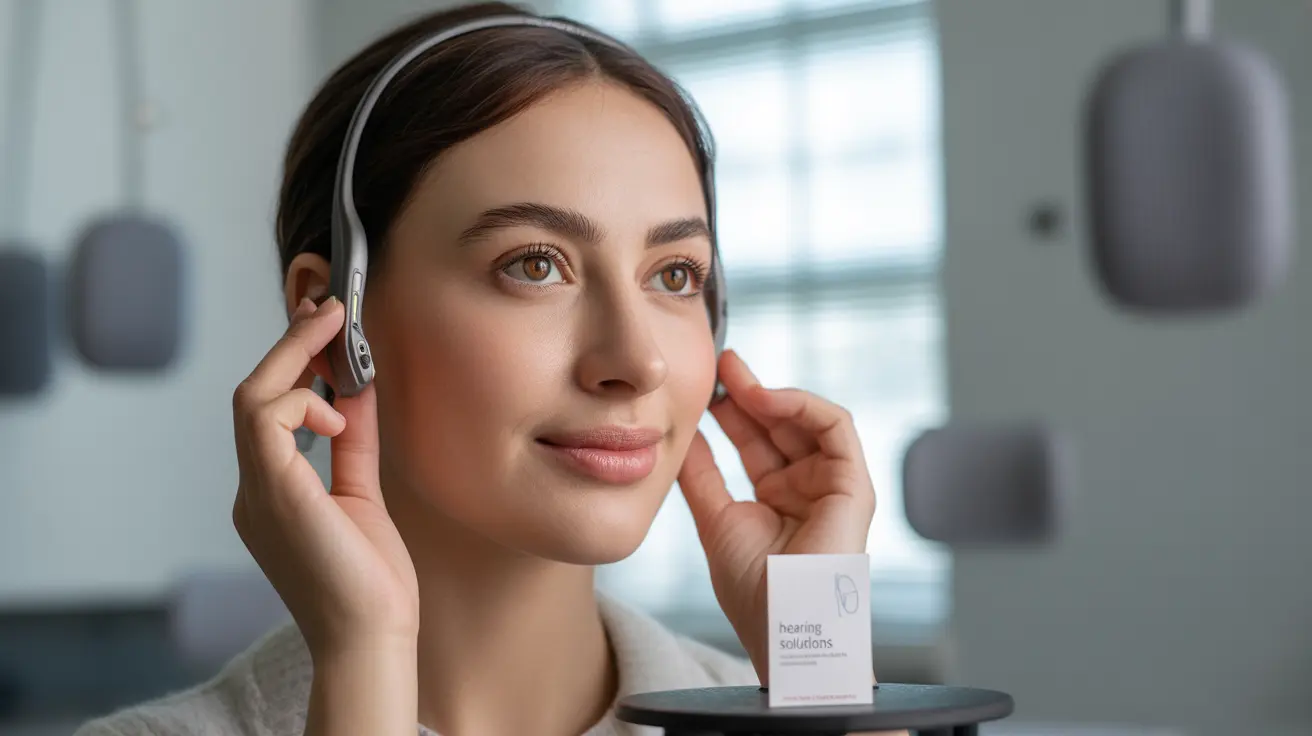For individuals experiencing conductive or single-sided hearing loss, non-surgical bone conduction hearing aids offer an innovative and non-invasive solution to improve hearing. These devices have revolutionized hearing assistance by providing effective results without the need for surgical intervention, making them an attractive option for many patients seeking hearing improvement.
Understanding how these devices work and their benefits can help you make an informed decision about whether a non-surgical bone conduction hearing aid might be right for you. Let's explore the technology, options, and considerations in detail.
How Non-Surgical Bone Conduction Hearing Aids Work
Bone conduction hearing aids work by converting sound waves into vibrations that travel through the skull bones directly to the inner ear, bypassing any problems in the outer or middle ear. This technology takes advantage of the body's natural ability to conduct sound through bone tissue.
Unlike traditional hearing aids that amplify sound through the ear canal, bone conduction devices transmit sound waves through the bones of the skull. This makes them particularly effective for people with conductive hearing loss or single-sided deafness.
Types of Non-Surgical Bone Conduction Devices
Headband Models
These devices use a comfortable headband to hold the bone conductor against the skull. They're particularly suitable for children and temporary use, as they're easily adjustable and removable.
Spectacle-Mounted Devices
For individuals who wear glasses, some manufacturers offer bone conduction devices integrated into eyeglass frames, providing a discrete and practical solution.
Behind-the-Ear Models
These devices rest behind the ear and press against the mastoid bone, offering a more traditional hearing aid appearance while delivering bone conduction benefits.
Benefits and Advantages
Non-surgical bone conduction hearing aids offer several distinct advantages:
- No surgical risks or recovery time
- Immediate results
- Reversible solution
- Cost-effective compared to surgical options
- Easy maintenance and care
- Suitable for various age groups
Selecting the Right Device
When choosing a bone conduction hearing aid, consider these important factors:
- Type and severity of hearing loss
- Comfort and fit preferences
- Battery life and charging options
- Water resistance
- Warranty and support services
- Cost and insurance coverage
Frequently Asked Questions
What are the best non-surgical bone conduction hearing aids available today for conductive or single-sided hearing loss?
The best non-surgical bone conduction hearing aids include models from reputable manufacturers that offer features like digital sound processing, wireless connectivity, and comfortable wearing options. The ideal choice depends on individual hearing needs, lifestyle, and budget considerations.
How do non-surgical bone conduction hearing aids work, and how are they different from traditional hearing aids or implants?
Non-surgical bone conduction hearing aids transmit sound vibrations through the skull bones directly to the inner ear, bypassing the outer and middle ear. Unlike traditional hearing aids that amplify sound through the ear canal, or surgical implants that require medical procedures, these devices work externally and can be removed at any time.
Are bone conduction hearing aids without surgery a good option for children or older adults, and what are the main benefits for these groups?
Yes, non-surgical bone conduction hearing aids are excellent options for both children and older adults. For children, they offer a flexible solution that can adapt as they grow, while older adults benefit from the easy maintenance, simple operation, and non-invasive nature of these devices.
What are the possible side effects or drawbacks of using a non-surgical bone conduction hearing aid, such as skin irritation or comfort issues?
Common challenges may include mild skin irritation where the device contacts the head, occasional discomfort from prolonged wear, and potential feedback issues. However, these issues are usually minimal and can be addressed through proper fitting and care.
Can I try a non-surgical bone conduction hearing aid before buying, and how do I know if it's the right solution for my hearing loss?
Many audiologists and hearing aid providers offer trial periods for bone conduction devices. To determine if it's right for you, schedule a comprehensive hearing evaluation with an audiologist who can assess your specific type of hearing loss and let you test different options.




